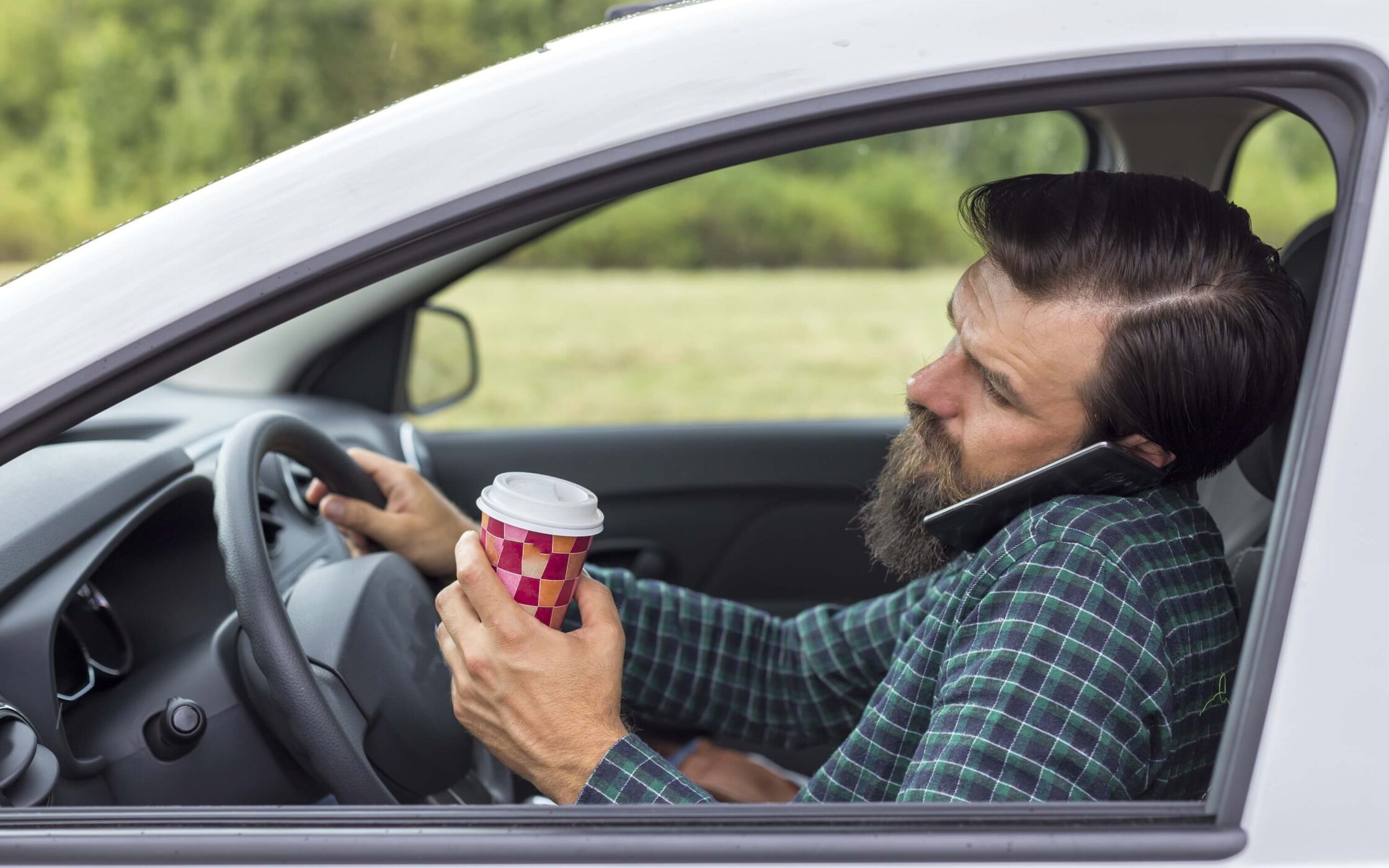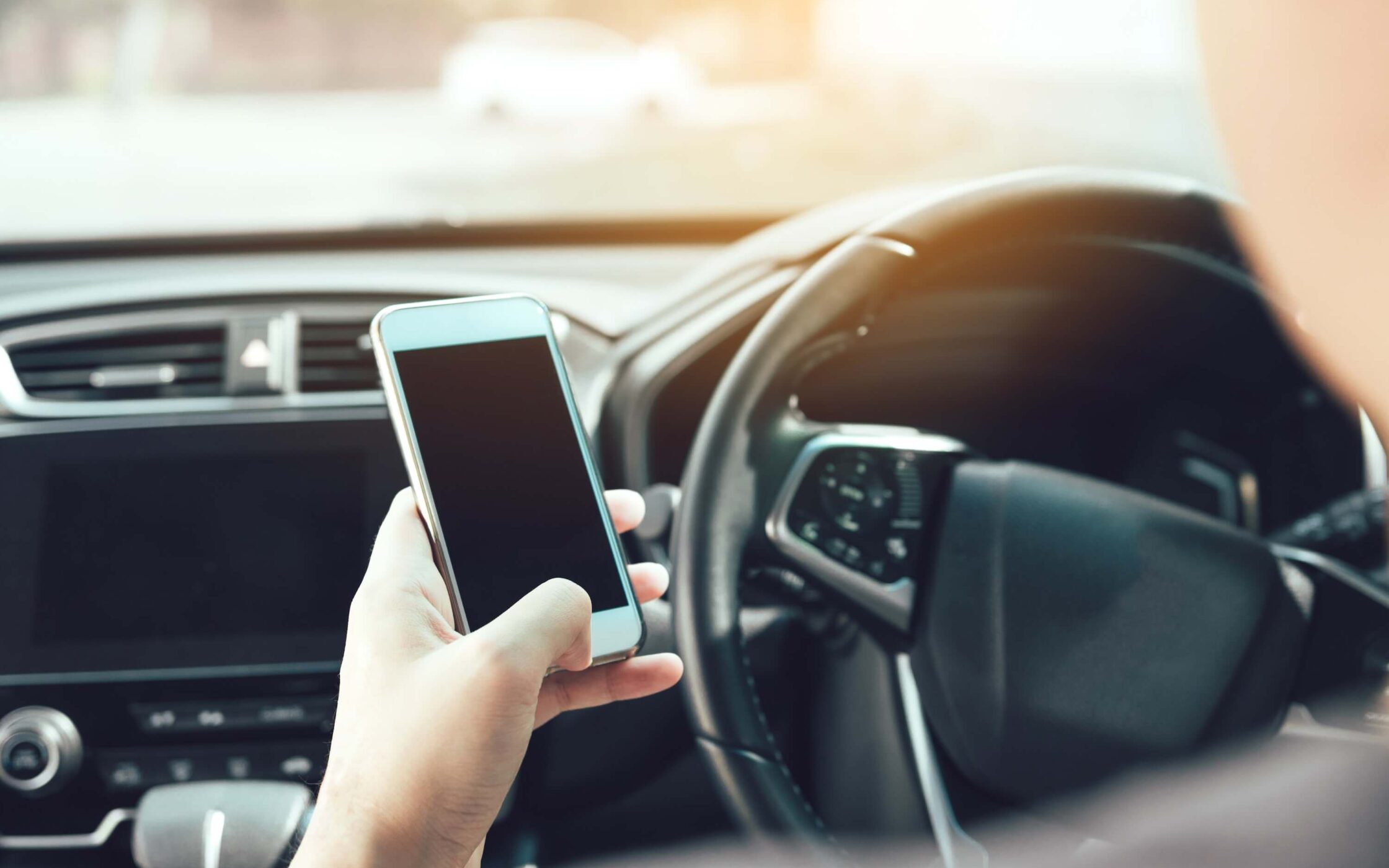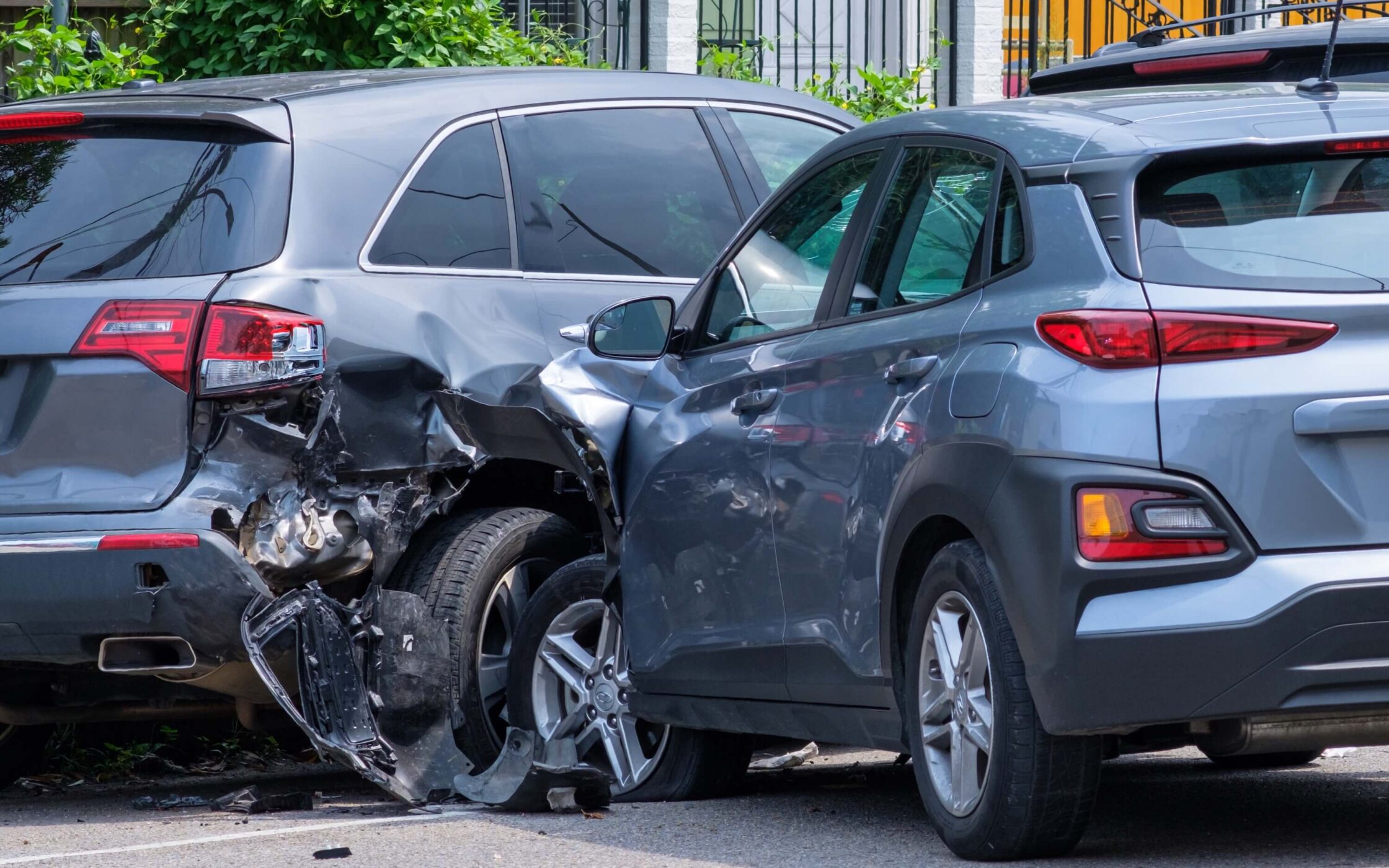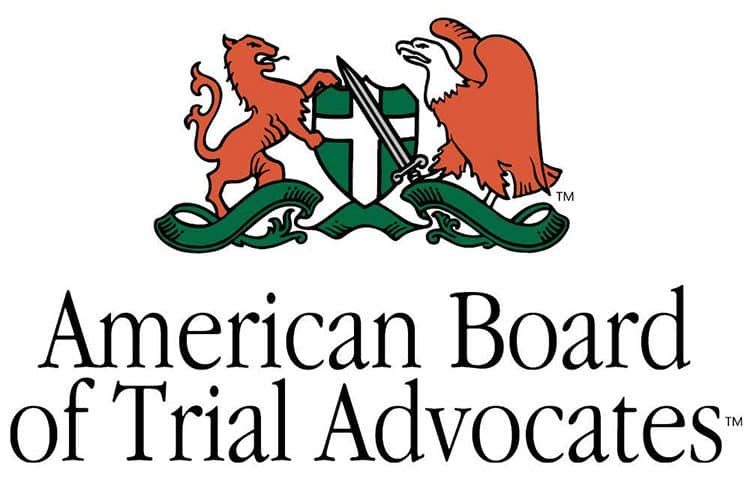Distracted driving is a leading cause of car accidents across the United States, contributing to thousands of injuries and fatalities each year. While many people associate distracted driving solely with texting or talking on the phone, there are four distinct distracted driving types: visual, manual, cognitive, and auditory.
Each of these common driving distractions can impair a driver’s ability to react appropriately, increasing the risk of motor vehicle crashes.

Visual Distractions: Taking Your Eyes Off the Road
A visual distraction occurs when a driver looks away from the road, even for a few seconds. Taking your eyes off the road for as little as five seconds at 55 mph is equivalent to driving the length of a football field blindfolded.
Examples of Visual Distractions
- Reading or sending a text message
- Looking at a GPS or navigation system
- Checking a notification on a smartphone
- Looking at a passenger while talking
- Staring at a roadside accident (rubbernecking)
- Adjusting vehicle controls (radio, climate settings, mirrors, etc.)
Dangers of Visual Distractions
- Delayed reaction time to sudden traffic changes
- Increased risk of missing road signs, traffic signals, or hazards
- Higher likelihood of drifting into another lane or off the road
Drivers should keep their eyes on the road at all times and use voice-controlled systems or preset GPS destinations before starting their trip to minimize visual-related driver distraction.
Manual Distractions: Taking Your Hands Off the Wheel
A manual distraction happens when a driver removes one or both hands from the steering wheel to do something else. Even a momentary loss of control can lead to catastrophic consequences, especially in high-speed traffic or hazardous road conditions.
Examples of Manual Distractions
- Eating or drinking while driving
- Holding a phone or typing on a keyboard
- Adjusting the radio, climate control, or GPS manually
- Reaching for something in the backseat or on the floor
- Grooming (applying makeup, shaving, fixing hair, etc.)
- Holding a pet or object in one hand while driving
Dangers of Manual Distractions
- Decreased ability to make quick steering corrections
- Inability to respond swiftly to unexpected road conditions
- Higher likelihood of veering off the road or into another lane
To reduce these types of driving distractions, drivers should secure all loose items before driving, eat meals before or after a trip, and avoid using handheld devices.
Cognitive Distractions: Taking Your Mind Off Driving
A cognitive distraction occurs when a driver’s focus shifts away from driving, even if their hands are on the wheel and their eyes are on the road. This type of distraction is particularly dangerous because drivers may falsely believe they’re fully engaged when their minds are elsewhere.
Examples of Cognitive Distractions
- Talking on the phone (even hands-free conversations)
- Engaging in deep conversations with passengers
- Daydreaming or thinking about stressful events
- Driving while fatigued or drowsy
- Focusing on work, personal problems, or upcoming events
- Listening to emotionally charged music or podcasts
Dangers of Cognitive Distractions
- Slower reaction times and impaired judgment
- Increased risk of missing important traffic cues
- Higher likelihood of failing to notice pedestrians, cyclists, or road hazards
To combat cognitive distractions, drivers should stay mentally engaged in driving, avoid deep or emotional conversations, and pull over if they feel fatigued or distracted.
Auditory Distractions: Sounds That Pull Your Attention Away
An auditory distraction occurs when a driver is distracted by sounds inside or outside the vehicle. While it may seem harmless, excessive noise can divert attention from important traffic sounds and create a sensory overload that reduces focus.
Examples of Auditory Distractions
- Loud music or conversations in the car
- Talking on the phone or using voice assistants
- Hearing a loud noise outside, such as a siren or honking horn
- Crying babies or loud children in the backseat
- Audio alerts from GPS, social media, or mobile apps
Dangers of Auditory Distractions
- Failure to hear emergency vehicle sirens or car horns
- Delayed response to surrounding traffic sounds
- Inability to concentrate on road conditions and driving maneuvers
To minimize these dangerous distractions, drivers should keep music at a reasonable volume, limit phone conversations, and avoid engaging in loud discussions while driving.
Why Texting While Driving Is Dangerous
Each type of distraction poses unique risks of serious or fatal crashes, but they may also occur simultaneously. Texting while driving, for example, is a combination of all four types of distractions. According to the Virginia Tech Transportation Institute (VTTI), drivers who engage in texting while driving are 23 times more likely to be involved in a crash. Texting while driving involves these distractions:
- Visual: Looking at electronic devices instead of the road
- Manual: Engaging in physical cell phone use instead of keeping both hands on the wheel
- Cognitive: Thinking about the message instead of driving
- Auditory: Hearing notifications or responses from the other person
Because texting and driving combines all four distractions, it’s one of the most dangerous types of distracted driving behaviors. The USDOT states that sending or reading a text takes a driver’s eyes off the road for an average of 4.6 seconds, significantly increasing the risk of a crash.
How Our Motor Vehicle Accident Lawyers Prove Distracted Driving
At Gingras, Thomsen & Wachs, our experienced auto accident lawyers will thoroughly investigate and collect compelling evidence to prove negligent actions of the distracted drivers that led to your accident and injury.
Cell Phone Records and Digital Data
These records can reveal whether the driver was:
- Texting or making phone calls at the time of the crash
- Browsing social media, emails, or websites
- Using navigation apps or streaming services
Traffic Camera and Surveillance Footage
This video evidence may capture:
- The driver looking down at their phone or another distraction
- Swerving or delayed reactions that indicate inattentiveness
- Running red lights or stop signs due to distraction
Eyewitness Testimony
Statements from passengers, pedestrians, other drivers, or bystanders can confirm that the driver was:
- Texting, eating, or applying makeup
- Holding a pet or reaching for an object
- Looking at a GPS or interacting with passengers instead of focusing on the road
Police Reports and Officer Observations
These reports may include:
- Statements from the at-fault driver admitting to using their phone or being distracted
- The officer’s observation of skid marks or lack of braking, indicating delayed reaction time
- Citations issued for reckless or inattentive driving
Accident Reconstruction and Expert Testimony
If necessary, we will work with accident reconstruction specialists to analyze:
- Vehicle positioning and impact angles to determine if the driver failed to brake or swerve in time
- Speed analysis to assess whether distraction caused delayed reactions
- Electronic data recorder (EDR) or “black box” data, which may show a lack of braking before impact
Social Media and Digital Activity Evidence
Our attorneys will investigate:
- Recent social media posts made by the driver just before the crash
- Time-stamped messages or comments proving phone usage
- Selfies, videos, or live-streaming activity that may have contributed to the accident
Vehicle Data and Infotainment System Logs
Modern vehicles are equipped with infotainment systems that store data, including:
- Bluetooth call logs that show if the driver was on a call
- Touchscreen interactions revealing that the driver was adjusting settings instead of focusing on driving
- Voice command usage records that may indicate distraction
Choose Our Experienced Auto Accident Attorneys to Maximize Your Compensation
If you or a loved one has been injured in a distracted driving accident, our proven motor vehicle accident lawyers at Gingras, Thomsen & Wachs will fight to hold the negligent driver liable for the highest possible damages. To schedule your free consultation, call us at 855-954-1186 or contact us online.






